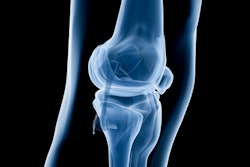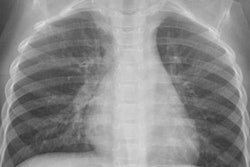
Routine chest x-ray in pediatric intensive care units (PICUs) should be abandoned in favor of on-demand ordering protocols to reduce costs and unnecessary radiation exposure in vulnerable patients, according to a study published June 6 in the Journal of Pediatric Nursing.
Canadian nurse clinicians compared the use of routine daily chest x-rays and on-demand ordering protocols in PICUs and found no differences between them in terms of clinical outcomes, including mortality, complications, length of stay in hospitals or intensive care units, and number of ventilator days. Conducting chest x-rays only on-demand also decreased the number performed and thus reduced cumulative radiation exposures, according to the authors.
"It is highly recommended that PICUs abandon their routine daily [chest x-ray] protocol and adopt an on-demand [chest x-ray] protocol," wrote Nicole Drummond of McGill University's Ingram School of Nursing in Montreal, Quebec.
Current American College of Radiology (ACR) guidelines do not recommend routine daily chest x-rays for any intensive care patient receiving mechanical ventilation unless there is a change in the patient's clinical condition. Yet, the use of routine chest x-rays at the bedside for intubated patients, regardless of their clinical status, has been reported to be the norm in many PICUs globally, including in Ireland, Saudi Arabia, and the U.S., according to the authors.
The researchers noted they initiated this study after nurses in a PICU at a university teaching hospital in eastern Canada indicated they perform routine daily chest x-rays on their unit for all mechanically ventilated patients, regardless of clinical status.
In a literature review, the authors identified 110 studies and included 18. They excluded studies that focused on non-ICU settings, for instance, or that evaluated radiation exposure from other modalities. Due to a limited number of articles concerning pediatric patients, articles involving routine daily chest x-rays on adult intensive care unit patients were included.
The analysis suggested there are a few advantages to the use of routine chest x-rays, including the identification of potentially life-threatening situations that otherwise may have failed to be diagnosed.
Disadvantages, on the other hand, included the following:
- Increased radiation exposure to patients
- Use of more hospital resources, resulting in increased costs
- Need to reposition patient, which may result in the displacement of lines and tubes
- Low incidence of clinically unsuspected abnormalities
- Potential harm arising from unnecessary treatment of minor or false positive findings
"These findings offer a summary of all current research on this topic. With the support of the AAP [American Academy of Pediatrics] and ACR, it is clear that all PICUs should be adopting the recommendation for an on-demand protocol for ordering [chest x-rays]," the researchers stated.
Ultimately, the ACR's recommendations state that on-demand chest x-ray ordering policies should be implemented in all intensive care units for patients receiving mechanical ventilation and that the routine ordering of chest x-rays should only be used to ensure initial placement of endotracheal or nasogastric (orogastric) tubes, Swan-Ganz catheters, central venous pressure catheters, or other life support items, the authors wrote.
"Since the AAP supports the adoption of the ACR criteria for [chest x-ray] ordering, it is understood that this practice is therefore not only safe but recommended in the pediatric population," they concluded.




















